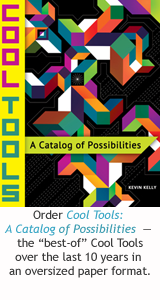-
What is the ideal starter welding rig?
Answers Given
Answers Favorited
-
What is the ideal starter welding rig? Cheapest entry. Just to try out for simple jobs. Mild backyard stuff.
0 -
|
http://www.harborfreight.com/wire-welder-90-amp-flux-68887.html The Harbor Freight 90 amp flux core welder will meet many beginners' needs. It currently has a 4 out of 5 star review rating from 101 reviewers on HarborFreight.com |
|
A lot of people go with the Lincoln 110/220 because of the price point and because it is what a lot of places keep in stock. Having worked with several of them, I would never recommend them. They are too inconsistent and for anything more than a hobby, just not good enough quality. Miller's buzz box on the other hand is a great machine, obviously more expensive and maybe out of the price range of a "starter" but if you are going to be doing any solid work. I have used it in professional settings on weight baring projects and was very pleased. |
|
The new Thermal Arc inverter rigs win hands down for price/performance. See 161i, 181i, etc. Do you need a spoolgun compatible for Al? BTW, from a pro fabricator for 20+ years. |
|
Miller 140. USED Can be had for about $300 with a gas setup. Easy to understand, use, and repair. Special bonus, anyone tha actually knows how to weld won't laugh at you when you show them your rig and ask for some help. I'm a choir director and I learned how to weld on this unit and have made all necessary repairs and adjustments with a minimum of effort or instruction. |
|
Musicman, I don't care about being laughed at. Isn't gas complicating things for a beginner? |
|
David, I was looking at the Harbor Frieght 90 amp hobby welder but there seemed to be some complaints that it was not sufficient to use the standard 3/32 rods and required thinner 1/8 which were harder to find. Have you used it? |
|
Forget buying anything until you have taken a introductory course in welding. Tech schools and community colleges around here offer evening courses of around 20 hours total. Often you can take your own projects and use their equipment. |
|
I bought an Everlast combo TIG/Plasma/Stick which ran about $600 from Amazon. Large tank of argon was about another $150 to buy the tank. I'm enjoying learning. My welds are ugly, but getting prettier, and I'm having lots of fun and TIG is pretty amazing. |
|
Northern Tool sells a great little 110v wire feed welder the call the 135. It's $320 and comes with a gas regulator, so you can set it up for flux core or MIG. It does a fine job for what it is. |
|
Northern Tool also sells a fantastic 110v - 20amp, Flux Core 125 wire feed unit - on sale right now for $130. A handy little unit about the size and weight of carry on luggage. I've run it off 100ft 12ga extension cord with no trouble. Its great for the novice like myself since there is little to adjust. 2 power settings, dependent on the thickness of the metal you are welding, and a feed rate adjustment. I've repaired an old trailer for a garden tractor, simple repairs to my snow plow truck, helped another dad fix a hand rail at our kids school, etc. etc. Couldn't be happier for the simple welding projects I occasionally do. |
|
Shortest answer: Lincoln MIG Pak 140 Short answer: MIG, small North American made: Miller, Hobart or Lincoln, preferably borrowed from a friend! Long answer: I'm a hack welder, am largely a beginner, am friend-, pamphlet- and forum-taught, and have only used flux-core and MIG. I started taking welding classes at my local community college, but they wanted me to start right at stick welding and work up through various classes to get to wire-feed welding - this did not suit my "Ed Gruberman" level of patience. Stick welding struck me as a much greater learning burden than wire feed welding. With flux-core and MIG, I have unsuccessfully blown holes in thin, rusty panels, eked out wandering and misshapen beads, and have utterly failed joint testing. That said, I have successfully joined metal together on a few projects, some of which I wouldn't be ashamed to put my name on. I believe that when looking for a welder "just to try out for simple jobs" this is where you want to end up? If you truly want "backyard welding", in all weather, then flux-core, as shielding gas gets blown away by wind. If you want easy, then absolutely MIG, as it seems so much more forgiving of beginner technique. Gas, far from complicating things, makes it far easier to create good joints. If you truly want cheapest, then perhaps a DIY machine like the AC stick, DC stick, DC spoolgun rig roundup here: http://www.instructables.com/id/Weld/ or Microwave transformer rig here: http://www.instructables.com/id/Build-a-Microwave-Transformer-Homemade-Welder/ I learned on a friend's Lincoln MIG Pak 10 (now called Lincoln Electric MIG Pak 140), and very recently bought a used Millermatic 180 Auto-set for myself. I like the availability of the Lincoln MIG Pak 140, as it regularly goes on sale new (for me, 1/2 price regularly at Canadian Tire), and comes up regularly used in the local on-line classifieds. I believe it can be serviced locally in most parts of North America. This package gets you started right away with Flux-core welding from 120V AC, and adds cost incrementally to move to MIG. It's not a toy, but with a thickness range of 24-gauge to 5/16", and a duty-cycle of 20% at 90A, it is limited. The experienced welders I've talked to prefer the greater control of the small Miller and Hobart units compared to the step setting of the small Lincolns. There doesn't appear to be as many of them available in the resale marketplace, and they command higher prices. If you do buy a used flux core/MIG machine, read through the manual and set it up properly for the welding mode you're using - polarity is reversed for one mode vs the other, and you won't get good results if the previous owner left it set up opposite to what you need. An auto-darkening helmet is a must-have now as it will make it much easier to learn. |
|
Sean, that Northern Tool unit seems like the ticket. THanks! |
|
I have a Hobart 140 amp mig welder that I recommend highly if you are welding lightweight stuff (1/4" thick or thinner). It's the biggest one they make that plugs into 110v. It comes with everything you need to use it with solid wire and shielding gas, but I've never gotten around to buying the bottle. I've just used it with fluxcore wire, which is expensive, but has some advantages: you can weld where it's windy, and you can weld rusty/dirty steel a little better. The downsides are: It's more expensive wire, and you have to chip or wirebrush off the slag. There's a learning curve--you will be frustrated with the wire welding itself into the tip. Get a bunch of tips, and get a .030 drill bit in a tip-cleaner. You can ream out the tips quite a few times before they are junk. If you are welding heavier stuff together, the tried-and-true Lincoln 220 stick welder is good. I use both, and both will run off of my 6500 watt generator, so I have portable capabilities, also. Full disclosure: I haven't run very many cheap welders aside from these two that I own. I have welded with some very nice 300-amp Miller Migs setup for Spray-arc. You can't beat that for making beautiful welds very fast on very heavy stuff. |
|
Hi First of all, what do you want to do? Mig is ok on car bodies etc if you have little or no experience. On thicker stuff it can be difficult for a novice to get penetration, looks great, but would be less than effective. A 140 amp set is more than adequate, with a propriety argon/CO2 mix, again suitable for the job at hand. Flux cored can be messy by comparison, can also be used with gas to great effect. Preparation and finish are also often overlooked, angle grinder to prep, wire brush to clean up after, anti spatter spray also helps. Dont forget PPE (mask, gloves, ear defenders, apron, etc) MMA, or stick as some call it, slower, more difficult to begin with, but for most jobs better. The ability to select the direct rod for the task and attain fantastic penetration is a boon. Low hydrogen, dissimilar metal, cast, etc are some of the more complicated tasks that can be performed. 50v OCV at 140 amps AC is fine for most stuff, if you want to get into more exotic stuff like cast or stainless then 80v OCV would be beneficial, maybe even splash put and get a DC set with hot start. If you're a beginner, stay away from TIG, gas welding and anything that promises to do more than one thing. Would you buy a TV, oven and lawn mower all in one system? Buy a book, join a forum, ask a friend and take a night class, because you can never know it all. Self taught is ok, but the best teachers know what they're teaching. |
A cool tool can be any book, gadget, software, video, map, hardware, material, or website that is tried and true. All reviews on this site are written by readers who have actually used the tool and others like it. Items can be either old or new as long as they are wonderful. We post things we like and ignore the rest. Suggestions for tools much better than what is recommended here are always wanted.
Tell us what you love.CATEGORIES
- Announcements
- Aural
- Autonomous Motion
- Backpacking
- Big Systems
- Clothing
- Communications
- Community
- Computers
- Consumptivity
- Craft
- Culture
- Dead Tools
- Deals
- Design
- Destinations
- Dwelling
- Edibles
- Every Day Carry
- Family
- Gardens
- Gareth's Tips
- General Purpose Tools
- Health
- Homestead
- Inner Space
- Kitchen
- Learning
- Life on Earth
- Livelihood
- Living on the Road
- Maker Tools
- Maker Update
- Materials
- Media Tools
- No Stream
- Nomadico
- Paper World
- Photography
- Play
- Podcast
- Prove Us Wrong
- Readers' Gifts
- Recomendo
- Related Stuff
- Science Method
- Somatics
- Source Wanted
- Tips
- Tool Chest
- Tools for Possibilities
- Uncategorized
- Vehicles
- Videos
- Visual Media
- What's in My Bag
- Workplace
- Workshop




